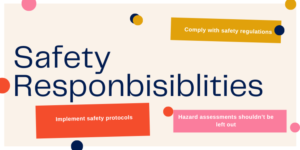The health and safety permit-to-work system is a crucial process that helps to ensure the safety and well-being of workers and others in a workplace. This system is designed to create a formal and documented process for managing high-risk activities, such as hazardous materials, confined spaces, or working at height.
Here are some key reasons why the health and safety permit-to-work system is important:
1. Hazard identification: The PTW system requires a rigorous assessment of the risks associated with the work to be performed before it is authorized. This helps to identify potential hazards and implement appropriate control measures to minimize the risks.
2. Risk management: The permit-to-work system helps to identify and manage risks associated with high-risk activities. By requiring a permit to be issued before work can begin, the system ensures that hazards are identified, and appropriate control measures are put in place to reduce the risks to workers. The PTW system ensures that high-risk activities are only carried out by trained and authorized personnel, using appropriate equipment and following safe work procedures. This helps to prevent accidents and injuries that may arise from these activities
3. Compliance with regulations: Many high-risk activities are regulated by health and safety legislation, and the permit to work system helps to ensure that these activities are carried out in compliance with relevant laws and regulations. the use of a PTW system can help organizations to comply with safety regulations and standards. This can help to avoid legal and financial penalties that may arise from non-compliance.
4. Communication and coordination: The permit to work system requires clear and concise communication between different parties involved in the activity, including the worker, the supervisor, and any other relevant parties. This helps to ensure that everyone understands their roles and responsibilities, and that information is shared in a timely and effective manner.
5. Accountability: The permit to work system helps to ensure that everyone involved in a high-risk activity is accountable for their actions. By requiring signatures and documentation at each stage of the process, the system ensures that everyone involved is aware of their responsibilities and is held accountable for any breaches of safety protocols.
5. Continuous improvement: The PTW system provides a framework for continuous improvement in safety management. By reviewing and analyzing PTW records and incident reports, organizations can identify areas for improvement and implement corrective actions to prevent future incidents. This helps to promote a culture of safety and reduce the risk of accidents and injuries in the workplace.
Overall, the health and safety permit to work system is an essential tool for managing high-risk activities in the workplace. It helps to ensure that workers are protected from harm, that risks are managed effectively, and that everyone involved in the activity is accountable for their actions.




